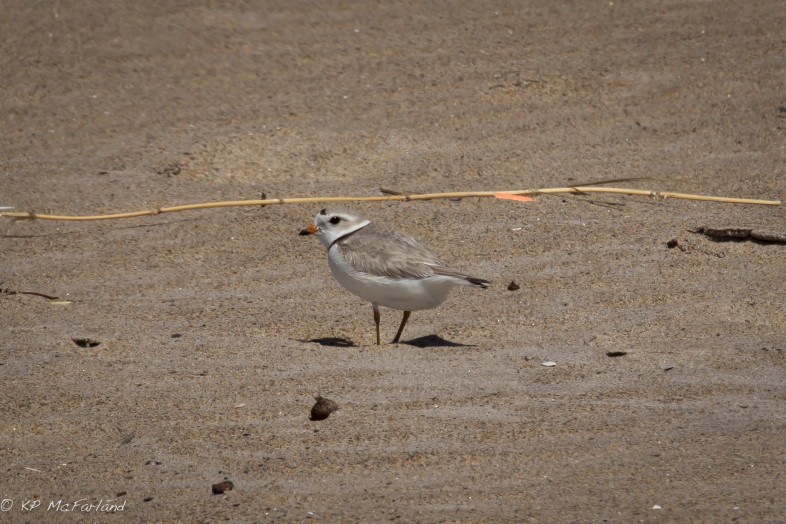
Adult Piping Plover near its nest site. / © K.P. McFarland
It was a difficult summer for the state-endangered and federally threatened piping plovers on Hampton and Seabrook beaches this year. This summer, three pairs nested on Hampton Beach with two chicks fledged (25+ days old), while on Seabrook Beach four pairs of plovers fledged three chicks. Last year in New Hampshire, seven pairs of plovers nested and fledged fifteen chicks.
As soon as piping plovers return to the beaches in May, N.H. Fish and Game biologists fence off the nesting areas with exclosures, yellow rope and signs alerting people to stay clear. Once the chicks are 25-30 days old, they can fly and escape from danger and the fence comes down, opening that section of beach to recreational use once again.
Piping plover chicks are able to walk and feed on their own soon after hatching. The newborn chicks are small — about the size of a cotton ball — and nearly the color of sand, making them vulnerable to predation by gulls, crows, foxes, cats, and dogs, or being stepped on by humans. Raising awareness among beachgoers on how they can help protect the plovers is key to their nesting success.
This was a difficult summer for the plovers, mostly due to nest abandonment. “Territorial behavior and inclement weather caused the abandonment of two nests while two others were lost to high tides,” said Samantha Morissette, Fish and Game’s piping plover monitor. “One additional nest was lost on Seabrook Beach when the adult male was killed by a suspected feral cat, after which the female left.”
In all, only nine chicks hatched, of which five survived to fledging. However, despite the low hatch rate, fledging more than half of the chicks that hatched can be considered a success, said Fish and Game Biologist Brendan Clifford.
Beachgoers can help protect plovers by leashing dogs, filling in holes in the sand where small chicks can get trapped, picking up trash and food on the beach that attracts gulls and crows, flying kites at least 200 yards away from plovers, and respecting signs and fencing near nesting plovers.
Conservation efforts by many partners and the cooperation of beachgoers have helped the piping plover population reach close to 2,000 pairs along the Atlantic Coast since the bird was listed as threatened under the Endangered Species Act in 1986.
To learn more about New Hampshire’s Piping Plover Project visit: www.wildnh.com/nongame/
Source: News from the New Hampshire Fish and Game Department
